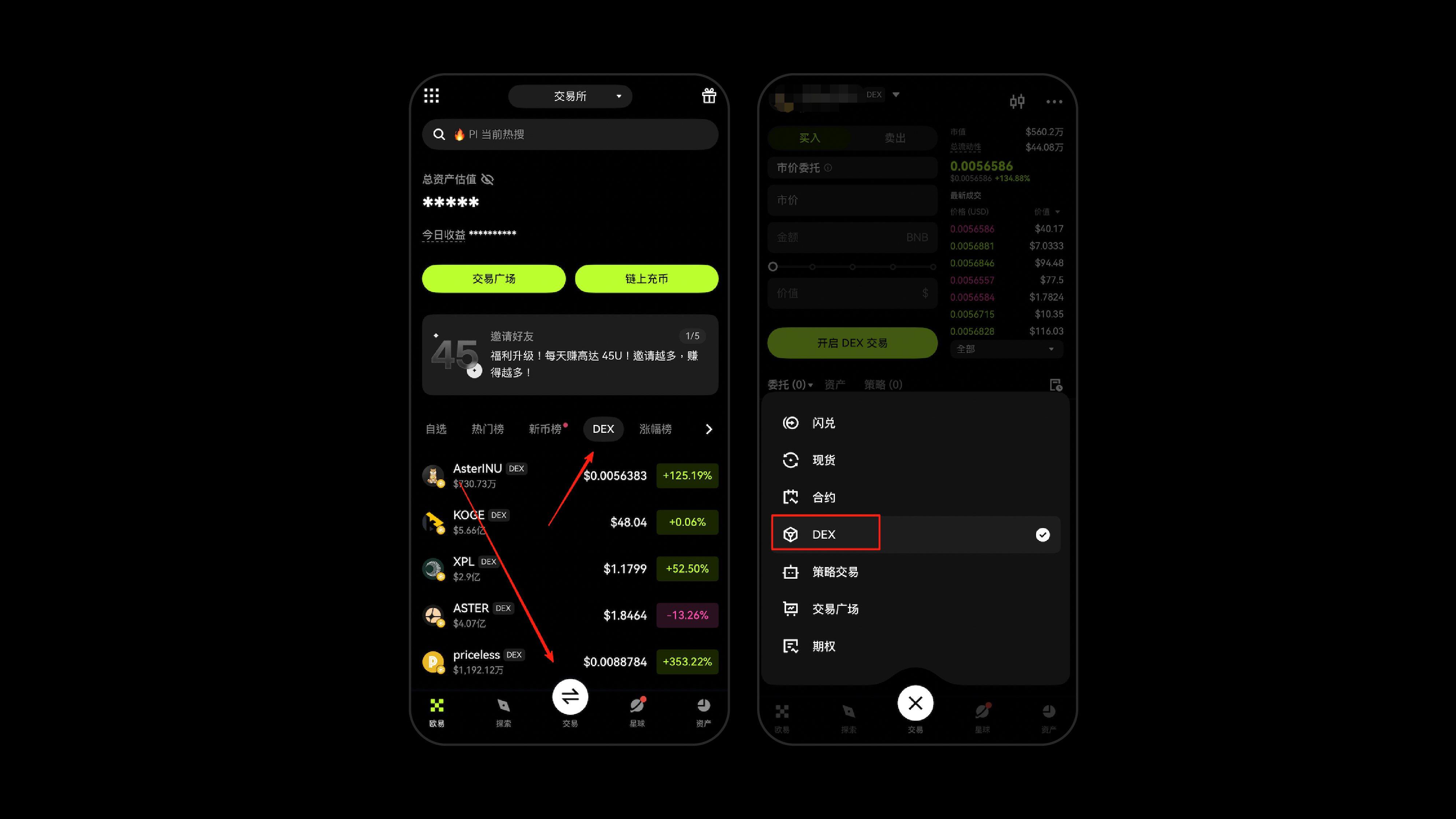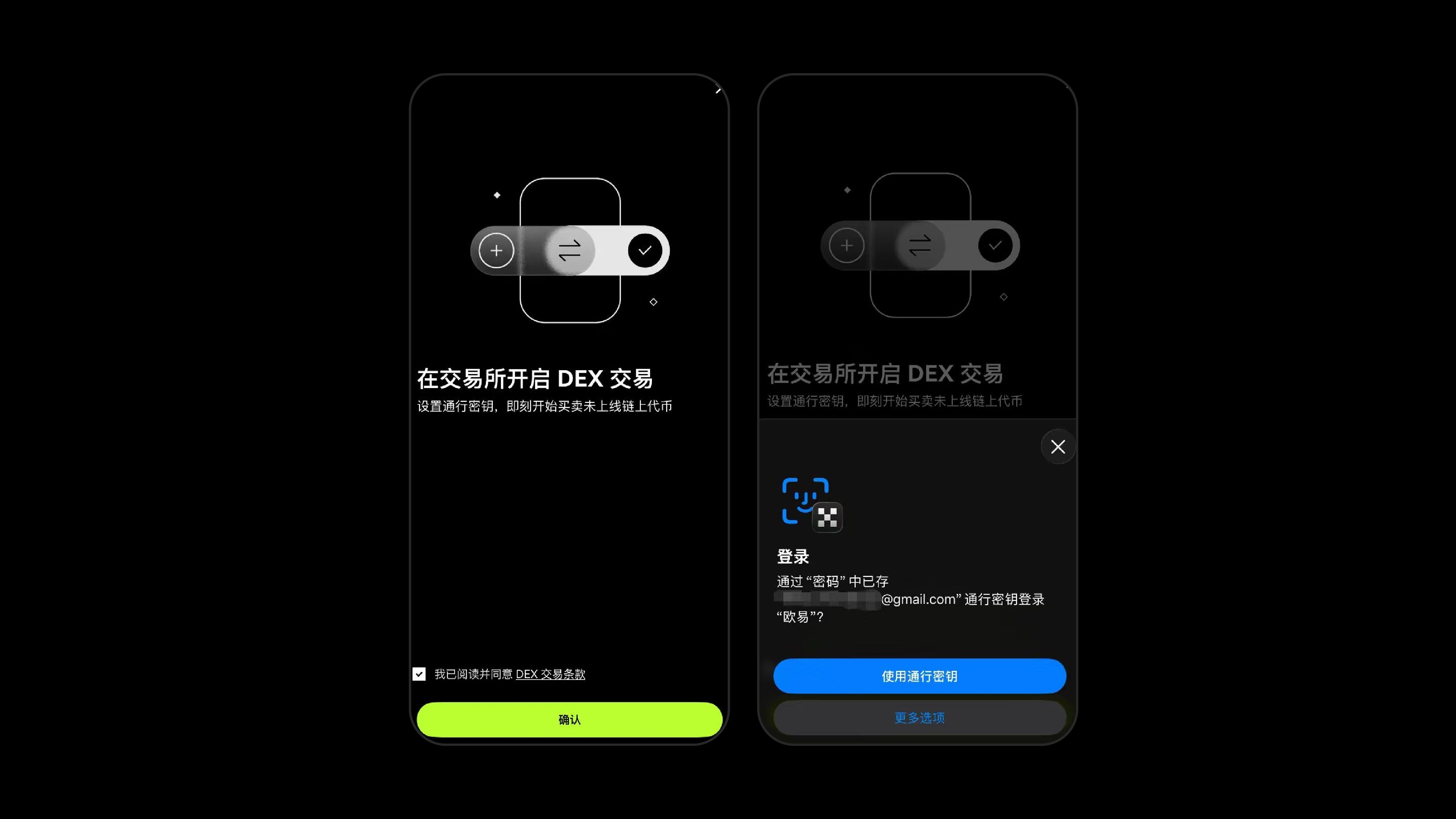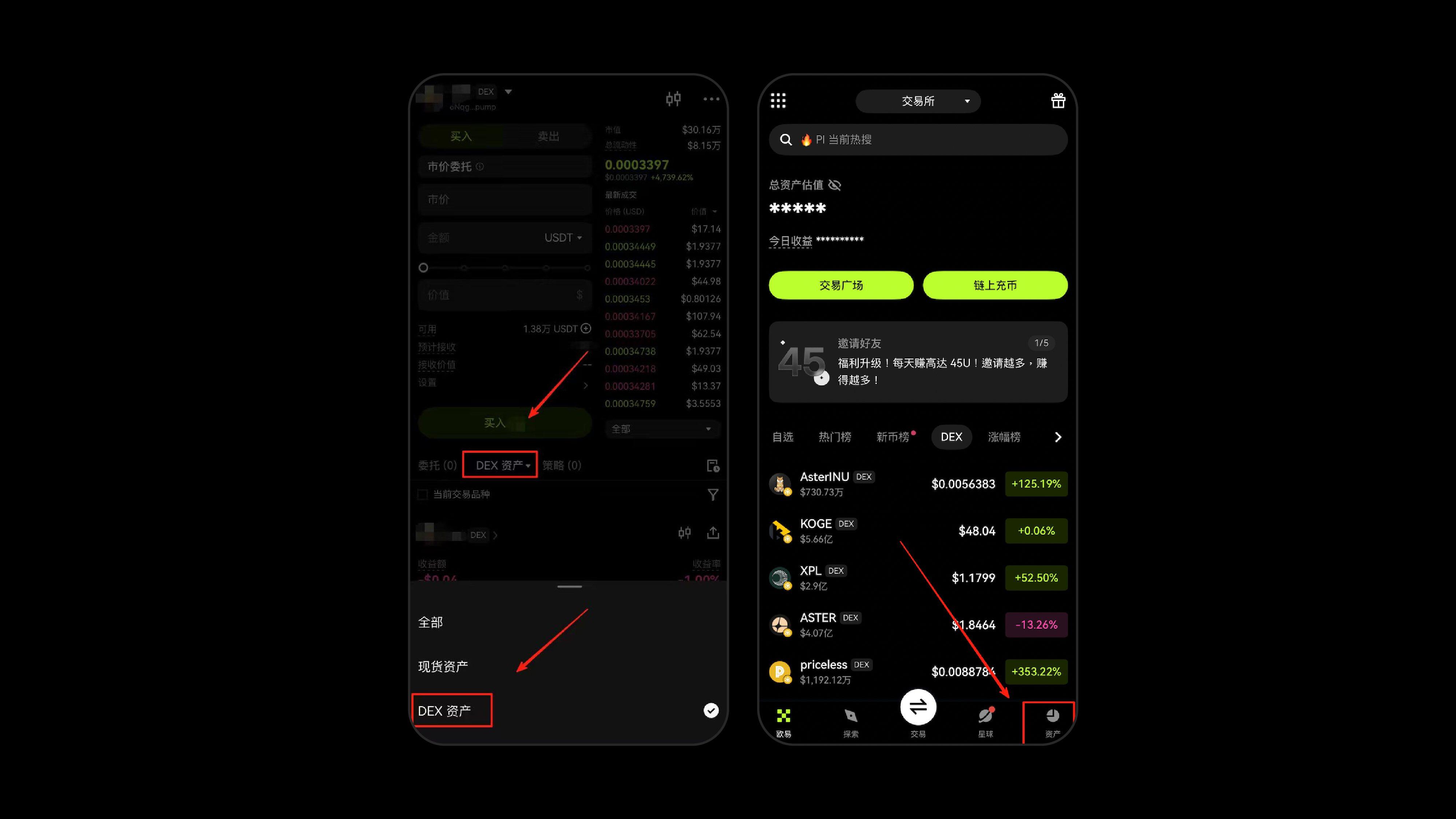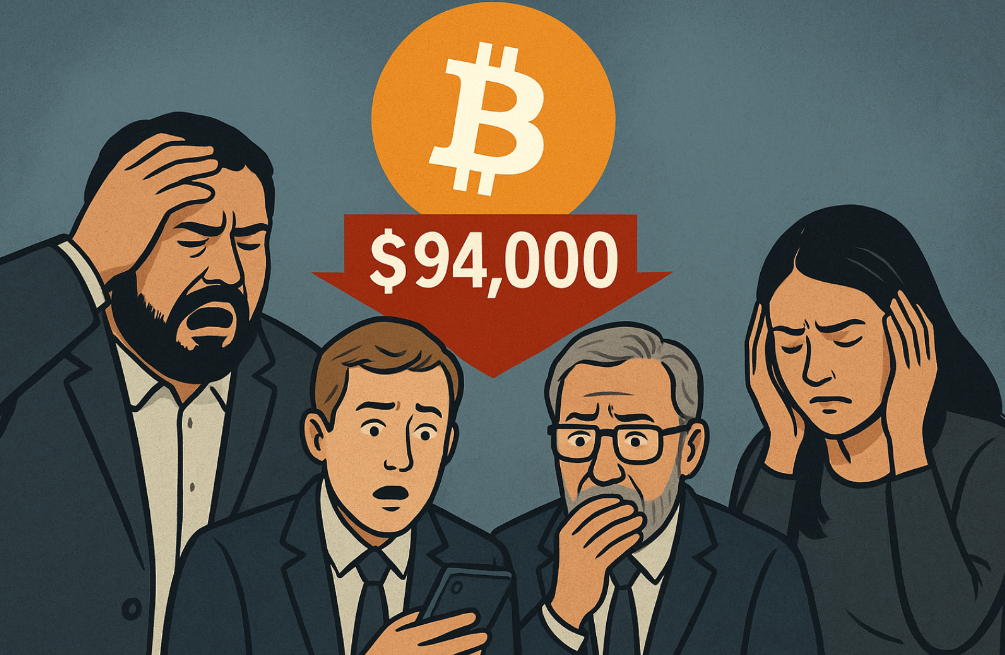"Either be a domesticated pig, safe but boring; or be a wild wolf, free but at risk of being shot at any moment."
This dilemma has been faced by crypto players for many years. In this extreme world, users are often divided into two camps. One camp consists of users of centralized exchanges, who enjoy a smooth trading experience, mature risk control systems, and stable liquidity, but at the cost of limited choices—whatever the platform offers is what they can trade, and more importantly, the control of their assets ultimately does not lie in their hands.
The other camp consists of explorers of decentralized exchanges, who embrace the infinite possibilities on-chain, where the earliest new assets and wildest yields exist, along with the highest degree of freedom. But the flip side of freedom is the cumbersome cross-chain processes, expensive gas fees, heavy private key management, and the risk of being hacked and having their wallets emptied if they are not careful.
For a long time, this has been the "binary dilemma" of the crypto world—a tug-of-war between safety and freedom. But now, it seems someone wants to flip the table. OKX has officially launched an exchange-integrated DEX, and this is not just another gimmick of a centralized platform integrating a decentralized one, but a genuine attempt to bridge the two ends and reconstruct the boundaries for players. The key point—this product is currently completely gas-free, subsidized by OKX for users!
Exchange-Integrated DEX: A Gateway to the On-Chain World
So, what exactly does the OKX exchange-integrated DEX do? In simple terms, OKX allows you to directly use tokens like USDT and USDC in your account to buy any on-chain tokens currently supported on public chains like Solana, X Layer, and Base. The tokens you purchase will go into a self-custodial wallet that is exclusively yours, with complete control over your assets.
This sounds like "CEX integrating DEX," or just moving the DEX aggregator from OKX Wallet? But in essence, it is completely different.
In the past, when you used the DEX aggregator in the OKX wallet, you had to manage your own mnemonic phrases, handle cross-chain transactions yourself, and bear the operational risks. The newly launched exchange-integrated DEX is essentially an on-chain entry tailored for centralized users—you just need to scan your face to open a wallet, with no need for mnemonic phrases; you can pay gas directly with USDT/USDC, without needing to exchange for native tokens like SOL. In other words, this is not about "making you adapt to on-chain," but "making on-chain adapt to you."
What does this mean?
You have the experience of a CEX: no need to register a Web3 wallet, no need to calculate gas fees, no need for cross-chain transactions. The entire trading process is as smooth as buying and selling BTC and ETH on a centralized exchange. Your USDT is a universal bullet. At the same time, you also have control over your assets. The assets are not in OKX's hands, but in an independent self-custodial wallet generated by the system for you. OKX has once again realized the long-cherished slogan—"Not your keys, not your coins."
From an experiential perspective, this feels more like opening a "gateway" within the CEX. When you see a potential on-chain token, you just need to place an order with one click, and the OKX DEX trading system will complete the transaction at a better price and faster speed, directly transferring the tokens into your self-custodial wallet. Additionally, the entire system also includes token discovery, market intelligence, and asset tracking features, allowing ordinary users to "easily understand on-chain" for the first time.
After activating this product feature, users can create a wallet in seconds, supporting Passkey and facial recognition, with no need for mnemonic phrases, and can exchange potential tokens with one click. Familiar operations, smooth experiences, and self-custodial assets—OKX is attempting to break down the "wall" that separates CEX from DEX, allowing more people to truly step into the on-chain world.
OKX is trying to solve the industry's long-standing "impossible triangle": security, convenience, and opportunity—can we really not have all three? In a sense, OKX's answer is: "Yes, we can." It is attempting to play that long-lost role—the ferryman between the centralized and decentralized worlds.
Three Types of "Ferrymen": Exchange-Integrated DEX, One-Stop Solution for Different Needs
The OKX exchange-integrated DEX is trying to "ferry" these different types of users.
The first type is Web3 novices or light users. They are curious about the on-chain world and have heard that "those who get on-chain early make a fortune," but when it comes to actual operation, they often find themselves blocked at the door—mnemonic phrases are complex and hard to remember, gas fees are opaque, cross-chain operations are cumbersome, and they have to manage their own wallets. Most of these users have trading experience on centralized exchanges but rarely go on-chain, occasionally buying inscriptions, NFTs, or Dogecoin for the hype, only to return to the familiar exchange after some hassle.
The OKX exchange-integrated DEX provides them with a brand new solution: in a familiar trading interface, they can directly use USDT or USDC to purchase on-chain tokens like Solana, X Layer, and Base, without needing mnemonic phrases, gas exchanges, or leaving the exchange. In the past, to chase popular tokens, they had to rush to secondary exchanges, manually cross-chain on DEX, and pray that the transaction wouldn't fail; now, they just need to place an order with one click, and the on-chain tokens are immediately in hand, while their USDT continues to earn interest in the trading account. For them, this is not just a new product, but a ticket that allows them to easily step into the on-chain world.
The second type is cautious large users. They may have been hacked on-chain or have seen cases of mnemonic phrases being leaked and wallets being hacked, so they are understandably wary. Although they want to participate in on-chain opportunities, security is always the top priority. They would rather keep their funds on an exchange than manage private keys alone.
The OKX exchange-integrated DEX provides this type of user with a "middle solution": the wallet remains in a self-custodial mode, with assets completely under the user's control, and OKX cannot access the private keys, but the trading process still occurs within the security system of the exchange. Funds can be transferred out for independent management at any time or can continue to be kept in the OKX environment, allowing users to avoid worrying about losing assets due to phishing or operational errors. In short, this type of user gets an ideal combination: funds in the exchange, security on-chain, allowing them to explore on-chain opportunities without sacrificing safety.
The third type is seasoned on-chain players, also known as the "nomadic tribe" on-chain. They might be trading Dogecoin on BSC today, jumping to Solana for new tokens tomorrow, and then switching to Base the day after, but they are often plagued by pain points: slow cross-chain transactions, chaotic gas fees, and frequent wallet switches, leading to extremely low efficiency.
The OKX exchange-integrated DEX allows them to experience "exchange-level" trading for the first time: directly using USDT to search and purchase multi-chain tokens within the exchange, with initial support for X Layer, Solana, and Base, and future expansions to ETH, SUI, Aptos, and more public chains. No need to withdraw tokens, no gas fees, no cross-chain transactions, no waiting—"if you see it, you can buy it," which not only saves operational time but also allows them to seize market opportunities.
Whether they are novices, cautious large users, or seasoned on-chain players, they can enjoy the convenience of CEX while having the asset sovereignty of DEX in a familiar trading interface, no longer having to choose one over the other.
Tutorial Guide: How to Trade DEX on OKX Exchange
To experience the OKX exchange-integrated DEX, you first need to meet some basic conditions: for a better experience, it is recommended to upgrade the OKX APP to the latest version before activating this feature, and then complete the OKX registration and KYC verification.
Step 1: Find the DEX Trading Entry
Open the OKX App, and click on "Trade" at the bottom of the exchange homepage to see the "DEX" option; alternatively, you can enter the DEX trading interface through the homepage rankings, market, search, etc. Once you find the entry, you are ready to step into the world of on-chain trading.

Step 2: Create a Self-Custodial Wallet (Only Once)
Before your first DEX trade, you need to create a dedicated self-custodial wallet. Each user can only have one DEX wallet. After creation, set a passkey, and thereafter, for each transaction, you only need to use facial recognition to start buying and selling on-chain tokens that are not yet listed.

Step 3: Conduct DEX Trading
Once your wallet is successfully created, you can start operating in the DEX trading interface. You can trade directly using USDT, USDC, or native tokens from the network in your exchange account. The entire process is similar to buying and selling tokens on a centralized exchange—simple, smooth, while enjoying ownership of on-chain assets.

Step 4: Check DEX Assets
After completing a trade, you can check your DEX token holdings at any time. Just click the "Assets" button at the bottom right of the OKX App, or select "Assets" on the DEX trading page—then enter "DEX Assets" to clearly see all your on-chain assets.

Unlimited Assets, One-Stop Trading
When an industry has been locked down for too long by poor experiences and high barriers, the true disruptor is not one that relies on a wave of hype to make a meme coin skyrocket, nor one that traps a few players with so-called quick tutorials, but one that dares to use the most straightforward and substantial methods to pave a safe, fast, and accessible on-chain path for ordinary people.
The "exchange-integrated DEX" product is such a bet. It bets that the future of Web3 does not depend on which chain is faster or which hype is hotter, but on who can first dismantle the wall that separates ordinary users from the on-chain world. It allows you to buy on-chain tokens as smoothly as on a centralized exchange without needing to cross chains, calculate gas fees, or worry about private key management, while also having complete control over your assets.
Truly achieving "unlimited assets, one-stop trading."
For those who have long been blocked on the shores of Web3, they do not need to undergo painful education or experience the fear of being hacked or losing private keys. What they need is an opportunity to participate in the on-chain world safely, smoothly, and decently. When ordinary users can browse, purchase, and explore various on-chain assets as easily as shopping online, they are no longer just bystanders; the on-chain world truly begins to belong to everyone.
And this "ferryman" is making freedom and security no longer a choice between the two. OKX is proving with practical actions that CEX is not just a starting point, but can also be a bridge to the decentralized world.
Disclaimer
This article is for reference only. It represents the author's views and does not reflect the position of OKX. This article does not intend to provide (i) investment advice or recommendations; (ii) offers or solicitations to buy, sell, or hold digital assets; (iii) financial, accounting, legal, or tax advice. We do not guarantee the accuracy, completeness, or usefulness of such information. Holding digital assets (including stablecoins and NFTs) involves high risks and may fluctuate significantly. Past performance does not guarantee future results, and historical performance does not represent future outcomes. OKX assumes no responsibility for any potential losses. You should carefully consider whether trading or holding digital assets is suitable for you based on your financial situation. Please consult your legal/tax/investment professionals regarding your specific circumstances. OKX and its affiliates have no affiliation with the owners or operators of any third parties displayed or aggregated on the OKX platform. OKX is not liable for any losses, damages, or any other consequences arising directly or indirectly from your use of the services. In the event of any loss or damage, including but not limited to the loss of user digital assets, users are advised to seek solutions directly from third parties. Not all products and services are available in all regions, and in some regions, products and services may be restricted or not offered. You are responsible for understanding and complying with applicable local laws and regulations.
免责声明:本文章仅代表作者个人观点,不代表本平台的立场和观点。本文章仅供信息分享,不构成对任何人的任何投资建议。用户与作者之间的任何争议,与本平台无关。如网页中刊载的文章或图片涉及侵权,请提供相关的权利证明和身份证明发送邮件到support@aicoin.com,本平台相关工作人员将会进行核查。



